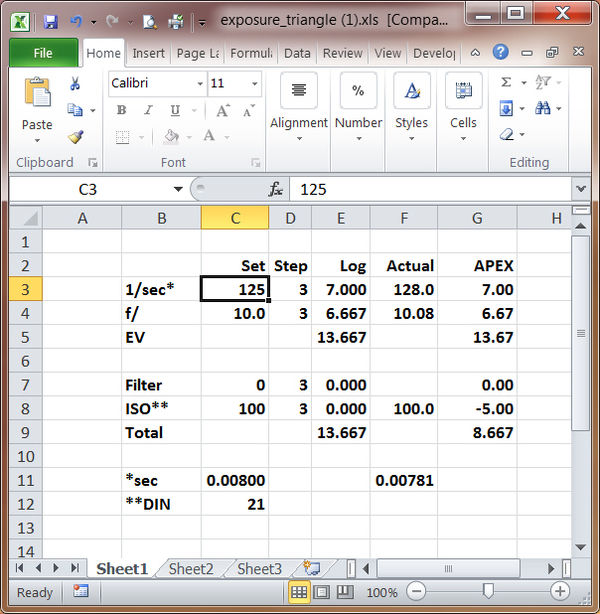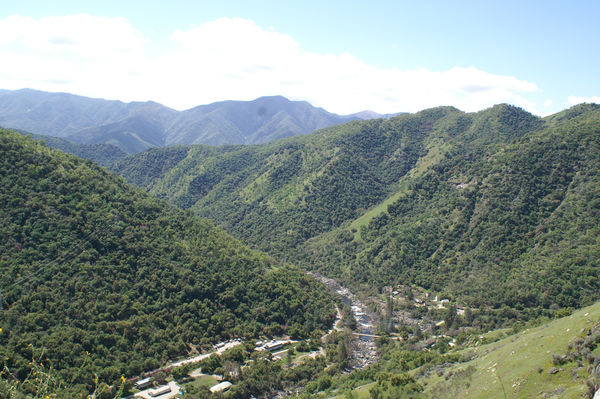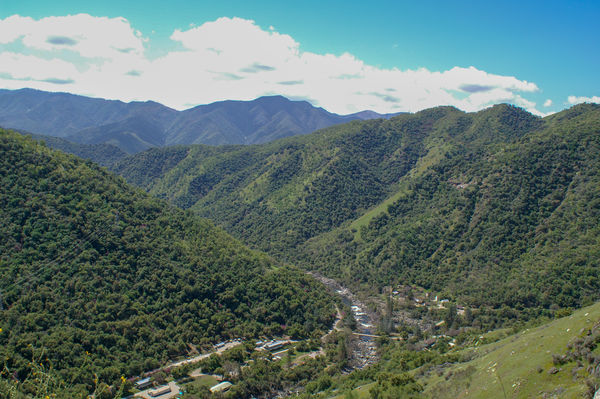Photo looks good, but sky and clouds look painted
Feb 10, 2019 09:37:50 #
My guess is, like many other photos on here, the sky is blown out. This is an exposure issue.
Sure, one can paste in a new sky, but wouldn't skillful exposure have been better?
--Bob
Sure, one can paste in a new sky, but wouldn't skillful exposure have been better?
--Bob
frankraney wrote:
I am going through a bunch of photos from when I w... (show quote)
Feb 10, 2019 10:04:23 #
autofocus wrote:
Actually, the clouds are not overexposed, just very flat looking. ...
No, the clouds are overexposed by about one stop. This might not have been recoverable even from the raw file.
You can't tell just from looking at the JPEG numbers since the camera might have attempted to map the highlights to something below 255.
But anyone looking at the JPEG itself should be able to recognize that the clouds are badly blown out.
You can tell from the exposure - ISO 100 1/125 @ f/10. That's one step brighter than Sunny 16, which should work for white clouds - if you are lucky.
Feb 10, 2019 10:31:03 #
selmslie wrote:
No, the clouds u are /u overexposed by about one... (show quote)
sorry, don't buy it...if the clouds were at 255 when shot, there's no way the camera can fix it if you can't fix it in RAW, at that point there is no usable data available for the fix. As I said, when I moused over the clouds the numbers did not show 255, yes 230's and 240's, but I did not see any 250's. If anything, the JPEG conversion done in camera should make it worse as it's discarding much of the available data during the compression function.
Feb 10, 2019 11:25:32 #
autofocus wrote:
sorry, don't buy it...if the clouds were at 255 when shot, there's no way the camera can fix it if you can't fix it in RAW, at that point there is no usable data available for the fix. ...
There is a difference between what the raw file records and what happens when it is converted to JPEG.
What ends up in the JPEG can be less than 255 even though the highlights in the raw file might be severely blown.
The conversion can also result in JPEG values of 255 even when the raw data is now blown by overexposure.
It only depends on how the camera does the conversion or how you do the conversion from raw to JPEG on your computer.
Take a look at https://www.uglyhedgehog.com/t-573233-6.html#9775636 and https://www.uglyhedgehog.com/t-573233-3.html#9772769 to see the difference between an image whose highlights are recoverable and one where they are irretrievably blown.
But in the case of the posted image, the severely blown highlights are visibly obvious due to the lack of tonality in the clouds.
Incidentally, the camera in is a Minolta MAXXUM 5D. It uses a 12-bit raw file. With a 12-bit raw file the highlights are easily blown out.
Feb 10, 2019 11:47:50 #
selmslie wrote:
There is a difference between what the raw file re... (show quote)
OK, what we also need to consider here is that what we are seeing is a post processed image by the OP...an attempt to correct the blown clouds with use of shadow/highlights, or balancing exposure in a program like Topaz likely could have been done. If in fact the clouds were blown, some of those steps would have reduced the luminosity, but would not be able to recover the lost details resulting in slightly darkened and detail-less end results. That could very well be the case here, and why the numbers were not showing up in the 250's. The only real way to know is to either see what the clouds looked like in person when shot, or see the unedited SOOC image before any post work corrections were done. Unfortunately, neither option is now available to us so that we could make a more accurate judgement. I think we both can agree that some post work was done on the original image affecting the luminosity of what very likely may have been an overexposure issue.
Feb 10, 2019 12:48:33 #
autofocus wrote:
... The only real way to know is to either see what the clouds looked like in person when shot, or see the unedited SOOC image before any post work corrections were done. ...
The image was taken about 12 years ago with a camera that recorded only 12-bit raw data. I can't speak for all 12-bit cameras but in my experience they have no cushion beyond where the JPEG starts to blow out because the raw file reaches a value of 4095. At that raw value the JPEG straight from the camera can reach the 8-bit value 255. There is nowhere left to go.
The concept of ETTR was developed to enable the photographer to get the most out of the limited range of a 12-bit file. Nobody started to talk about EBTR (Expose Beyond The Right) until cameras started using 14-bit raw files.
But there is a key piece of evidence in the EXIF information - the ISO and exposure settings. ISO 100 1/125 @ f/10 is an EV or 13.67. The brightest clouds in broad daylight will reach the top of the JPEG range at EV 14.67 (Sunny 16) and it should be safe to use EV 15 (one stop darker) with a 14- or 12-bit raw file.
Feb 10, 2019 14:22:54 #
Boy am I embarrassed. I just read the last response from Vince....it got my attention. I thought I had uploaded an unedited image. I did not.....I forgot I have LR set to set "auto" on import, which I needed to do with my D3300, since I noticed I was starting there anyway. I now have 3 cameras and need to not do adjustments on import.
The clouds are blown as you can see in the SOOC image. there is also a spot on sensor which was not there, which I had removed and forgotten, this image was taken in Feb of 07, a log time ago.
When I looked at what I thought was unedited the clouds looked funny. I suspected it was overexposed, but made another mistake, I should have hit the reset and it would have been obvious. I was so blind I did not notice the sliders were adjusted, or I would have hit reset.
I have learned an embarrassing lesson or two (looking stupid will do that).
1) I need to slow down and pay more attention to what I am doing.
2) I am removing the "auto" adjustment on import, and only use, if needed, after culling the import.
3) make sure when I upload, I use SOOC and edited if needed.
I just didn't think when I saw the water color clouds and jumped to quick, I'd say. Next time I see this, I will know exactly what it is. I will never forget this lesson.
The rest of the image is good enough, I might try replacing the sky. This image is from my working days and some of the best times were at this location.
Thanks again all.....Sorry
The clouds are blown as you can see in the SOOC image. there is also a spot on sensor which was not there, which I had removed and forgotten, this image was taken in Feb of 07, a log time ago.
When I looked at what I thought was unedited the clouds looked funny. I suspected it was overexposed, but made another mistake, I should have hit the reset and it would have been obvious. I was so blind I did not notice the sliders were adjusted, or I would have hit reset.
I have learned an embarrassing lesson or two (looking stupid will do that).
1) I need to slow down and pay more attention to what I am doing.
2) I am removing the "auto" adjustment on import, and only use, if needed, after culling the import.
3) make sure when I upload, I use SOOC and edited if needed.
I just didn't think when I saw the water color clouds and jumped to quick, I'd say. Next time I see this, I will know exactly what it is. I will never forget this lesson.
The rest of the image is good enough, I might try replacing the sky. This image is from my working days and some of the best times were at this location.
Thanks again all.....Sorry
Feb 10, 2019 14:30:54 #
Understandable. If one knows their cameras's limits, then metering on the brightest portion of the scene and adjusting exposure to place that bright part in the appropriate zone will enable one to capture the maximum amont of data in a controlled manner. Processing will produce a complete range of tonal values.
This process requires one to test their camera for its limits and then expose within those limits. Processing brings out the tonal values as one visualized.
--Bob
This process requires one to test their camera for its limits and then expose within those limits. Processing brings out the tonal values as one visualized.
--Bob
autofocus wrote:
sorry, don't buy it...if the clouds were at 255 when shot, there's no way the camera can fix it if you can't fix it in RAW, at that point there is no usable data available for the fix. As I said, when I moused over the clouds the numbers did not show 255, yes 230's and 240's, but I did not see any 250's. If anything, the JPEG conversion done in camera should make it worse as it's discarding much of the available data during the compression function.
Initial Opening in ACR or SOOC
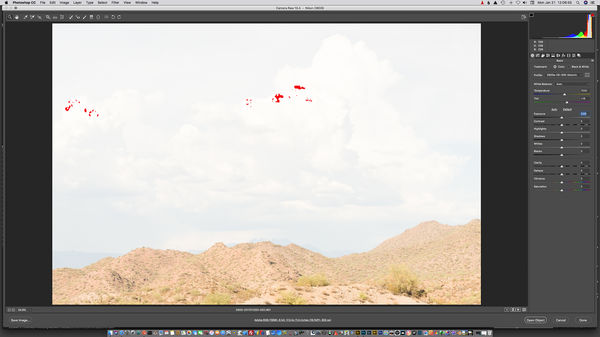
(Download)
After Initial Adjustments in ACR
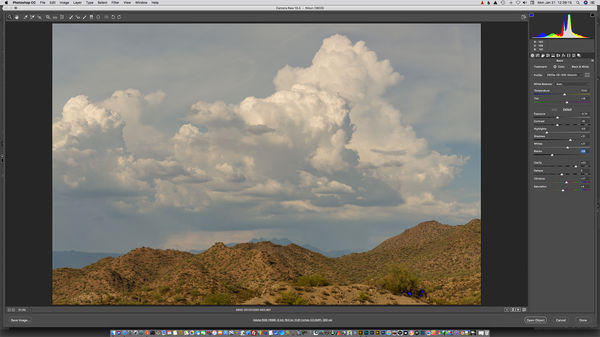
(Download)
Initial Conversion to B and W with Zonal Adjustments in PS
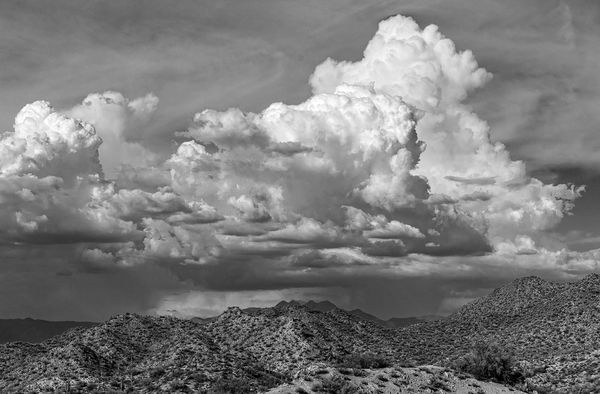
(Download)
Additional Burning and Dodging
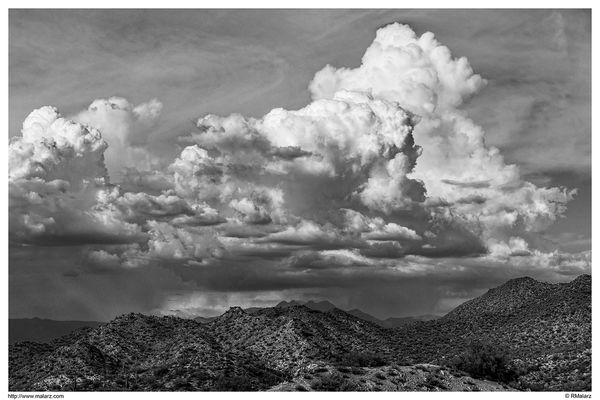
(Download)
Feb 10, 2019 15:24:48 #
frankraney wrote:
Boy am I embarrassed. I just read the last respons... (show quote)
no need to apologize Frank...all is good! :)
If you want to reply, then register here. Registration is free and your account is created instantly, so you can post right away.



